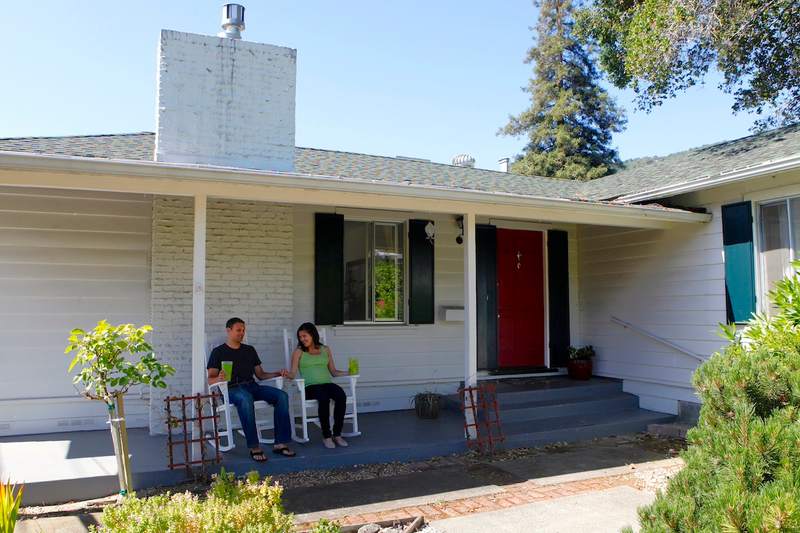Like many home buyers, you’re probably aware that VA loans are backed by the Department of Veterans Affairs and don’t require down payments or mortgage insurance. But did you know that VA loans are also assumable, meaning a borrower can hand their mortgage over to someone else?
In this article, we’ll discuss why VA loans are assumable, the pros and cons of this process and how you can take one over.
Find out if a VA loan is right for you.
See rates, requirements and beneifts.
Are All VA Loans Assumable?
Mortgage assumption occurs when a buyer takes over the loan for a specific piece of real estate. This transfer means the new homeowner will have the same mortgage payment and interest rate as the seller. The seller’s credit could also be harmed if the buyer struggles with the loan in the future, as they are still legally liable for the debt. Unlike with a regular loan, the buyer typically will not pay closing costs, but rather a VA funding fee (typically 0.5% of the loan balance when assuming a VA loan).
Most government loans are assumable, while private mortgages are not. That’s because many lenders include a due-on-sale clause in their paperwork. This addition legally requires a conventional mortgage to be paid in full before the property is sold and ownership is transferred.
On the other hand, government-backed mortgages like FHA or USDA loans don’t include a due-on-sale clause, so loan assumption is possible. Since the government also backs VA loans, they’re assumable as long as the buyer meets the VA lender’s requirements.
See What You Qualify For
Buy A Home
Discover mortgage options that fit your unique financial needs.

Refinance
Refinance your mortgage to have more money for what matters.
Tap Into Equity
Use your home’s equity and unlock cash to achieve your goals.
Who Can Assume A VA Loan?
VA mortgages are typically only available to active-duty service members, veterans and their spouses. Although, a non-veteran can assume a VA home loan as long as the original holder of the loan is willing to transfer their VA loan entitlement. The veteran seller who has transferred their VA loan entitlement to a non-veteran buyer will not be able to get another VA loan until the original loan is paid off, which is a clear downside for the seller. When a VA loan is assumed by another eligible veteran, the entitlement typically does not need to be transferred and can simply be exchanged between the buyer and seller.
For this reason, most VA loan holders don’t let non-veteran buyers assume their loans. However, the favorable terms of the VA loan make it an appealing bargaining chip, and some sellers who hold VA loans will use this to their advantage, particularly if they have no plans for the immediate future to take out another VA home loan.
Veterans Administration Home Loan Assumption Requirements
Let’s assume you’re a potential buyer who wants to assume a VA loan. You’ll need to meet specific VA requirements used by the seller’s lender. Of course, the specifics will depend on the financial institution, but you’ll have to meet the following requirements:
- Have a credit score of at least 580
- Have a debt-to-income (DTI) ratio of 45% or lower
- Pay the VA funding fee
- Make a down payment, if there’s a gap between the purchase price and loan amount
- The property will be your primary residence
You may be exempt from paying the VA funding fee if you’re already receiving compensation from a service-related disability, entitled to receive disability compensation or are a surviving spouse of a veteran who died from a service-related disability.
Should You Assume A VA Loan?
Before you assume a VA loan, you should first fully understand the advantages and disadvantages. Taking the opportunity to learn more about both will help ensure this mortgage option is the right choice for your situation.
Benefits Of Assuming A VA Loan
Assuming a VA loan comes with a variety of benefits for both the buyer and homeowner.
Benefits For The Buyer
A potential buyer doesn’t need to be an active-duty service member or veteran to secure VA loan terms for their home loan. That means a buyer might be able to secure a lower-than-average interest rate, especially if the homeowner finalized their loan during a time period with lower rates. This, in turn, could mean lower monthly mortgage payments.
The funding fee and closing costs are also reduced for an assumption compared to a standard VA loan. Usually, the funding fee is 1.25% – 3.3% of the total loan, however, the buyer only has to pay 0.5% during a VA loan assumption.
Benefits For The Seller
Sellers should carefully consider whether they want to allow a buyer to assume their loan. However, if the seller has good reason to believe that they will not need another VA home loan for several years (for instance, they may be planning to live overseas for an extended period or are planning for their next long-term residence to be an apartment or retirement home) and has confidence in the ability of the buyer to make all future mortgage payments, then allowing a buyer to assume their loan could be advantageous.
Since assuming a VA loan does carry many benefits for the buyer, a seller can potentially ask a higher price for their home or sell their home more quickly if they offer this option as a deal sweetener. They might also be able to find a buyer who will push for fewer contingencies.
These benefits are more relevant in a buyer’s market.
Drawbacks Of Assuming A VA Loan
Unfortunately, assuming a VA loan also involves a few risks for the buyer and seller.
Drawbacks For The Seller
A seller may have to forfeit their entitlement if the buyer doesn’t meet military service requirements. That means that they can’t get a new VA loan to purchase their next home until the assumed loan is paid off.
The seller’s credit score could be negatively affected as well if the buyer defaults on the loan or makes a late payment before liability is transferred. The lender will hold the initial borrower responsible for payments until there is a release of liability, which could take some time, depending on the lender.
Drawbacks For The Buyer
With a standard VA loan, buyers aren’t required to make a down payment. But with an assumption, a buyer may need to put down a significant amount of money to make up the difference between the home’s purchase price and the loan balance.
Find out if a VA loan is right for you.
See rates, requirements and beneifts.
How To Assume A VA Loan
If you’ve decided that a VA loan assumption is the best option for you to achieve homeownership, you can use the following steps to complete the process:
- Find a home seller who will allow you to assume their VA loan. Since there are a few drawbacks to this option, you may have difficulty locating a homeowner who is willing to go this route, but there are ways you can find interested sellers. Talk to your real estate agent or check the multiple listing service (MLS).
- Verify that you meet the VA’s minimum credit score and income requirements. While VA loans have less stringent requirements, you’ll still need to ensure you meet the conditions for assuming a VA mortgage and get the lender’s approval for the transfer.
- Agree to assume all obligations of the existing loan. After you receive approval, you’ll take over the current mortgage, which means you’ll have the same payments and interest rate as the previous homeowner.
- Pay the funding fee, down payment (if required) and closing costs. The lender will require you to pay the reduced funding fee and closing costs along with your down payment.
- Exchange your VA loan entitlement. If you’re a qualifying active-duty service member, veteran or surviving spouse, you can exchange your entitlement for the previous homeowner’s at this point in the process.
- Ensure that the seller requests a release of liability. The seller will probably need to ask their lender to release their liability for the assumed mortgage. Otherwise, their credit score could be at risk.
The Bottom Line
While the VA loan assumption process can be more complicated than the typical home buying journey, it still may be the best option for some qualifying buyers. However, if you feel like the risks outweigh the benefits of this type of financing, you can always apply for a standard VA loan or a conventional mortgage.
Find out if a VA loan is right for you.
See rates, requirements and beneifts.

Victoria Araj
Victoria Araj is a Staff Writer for Rocket Companies who has held roles in mortgage banking, public relations and more in her 15-plus years of experience. She has a bachelor’s degree in journalism with an emphasis in political science from Michigan State University, and a master’s degree in public administration from the University of Michigan.












